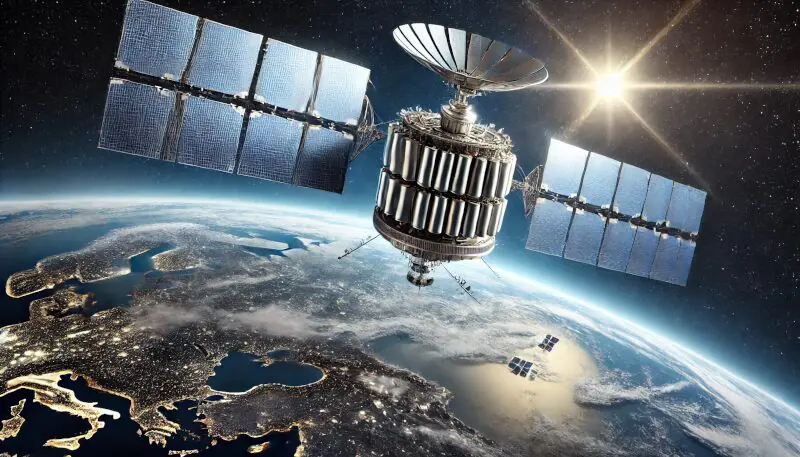China is taking the solar energy race to an entirely new level—literally.
The country is planning to build an enormous solar power station in space, with the goal of continuously beaming energy back to Earth via microwaves. If successful, this ambitious project could generate more energy in a single year than all the oil extracted from the planet.
The plan involves assembling a 0.6-mile-wide (1-kilometer-wide) solar array in geostationary orbit—a staggering 22,370 miles (36,000 kilometers) above Earth.
That’s high enough to stay in a fixed position relative to the planet, ensuring constant, uninterrupted sunlight, something Earth-based solar farms can only dream of.
Unlike traditional ground-based solar farms, which struggle with cloud cover and atmospheric interference, a space-based array would capture sunlight 10 times more intensely than solar panels on Earth.
This means it could supply power day and night, free from weather disruptions, and potentially beam that energy anywhere in the world.
The Energy Equivalent of the Three Gorges Dam—In Space
Long Lehao, the chief designer of China’s Long March rockets, emphasized the sheer scale of the project by comparing it to the Three Gorges Dam, China’s massive hydroelectric power station that churns out 100 billion kilowatt-hours annually.
However, he suggests this space-based array could eventually produce even more energy than that—and on a global scale.
To get it off the ground (literally), China will rely on its new heavy-lift rockets to transport components into orbit. These modular parts would then be assembled in space, forming a massive floating energy generator.
A Concept That’s Been Waiting for the Right Moment
The idea of Space-Based Solar Power (SBSP) has been around for decades, but major hurdles—like the high cost of launches and the complexity of assembling large structures in orbit—have kept it from becoming reality.
However, with advancements in reusable rockets, precision robotic assembly, and energy transmission technology, China believes it’s now within reach.
If China pulls this off, it wouldn’t just be a scientific triumph—it could completely reshape how we think about global energy supply.
Instead of being dependent on fossil fuels or intermittent renewables, the world could tap into an always-on, unlimited power source floating above us.
This move underscores China’s commitment to cutting-edge space technology and sustainable energy solutions. Whether this project succeeds or not, one thing is clear: the future of energy isn’t just on Earth—it’s above it.




